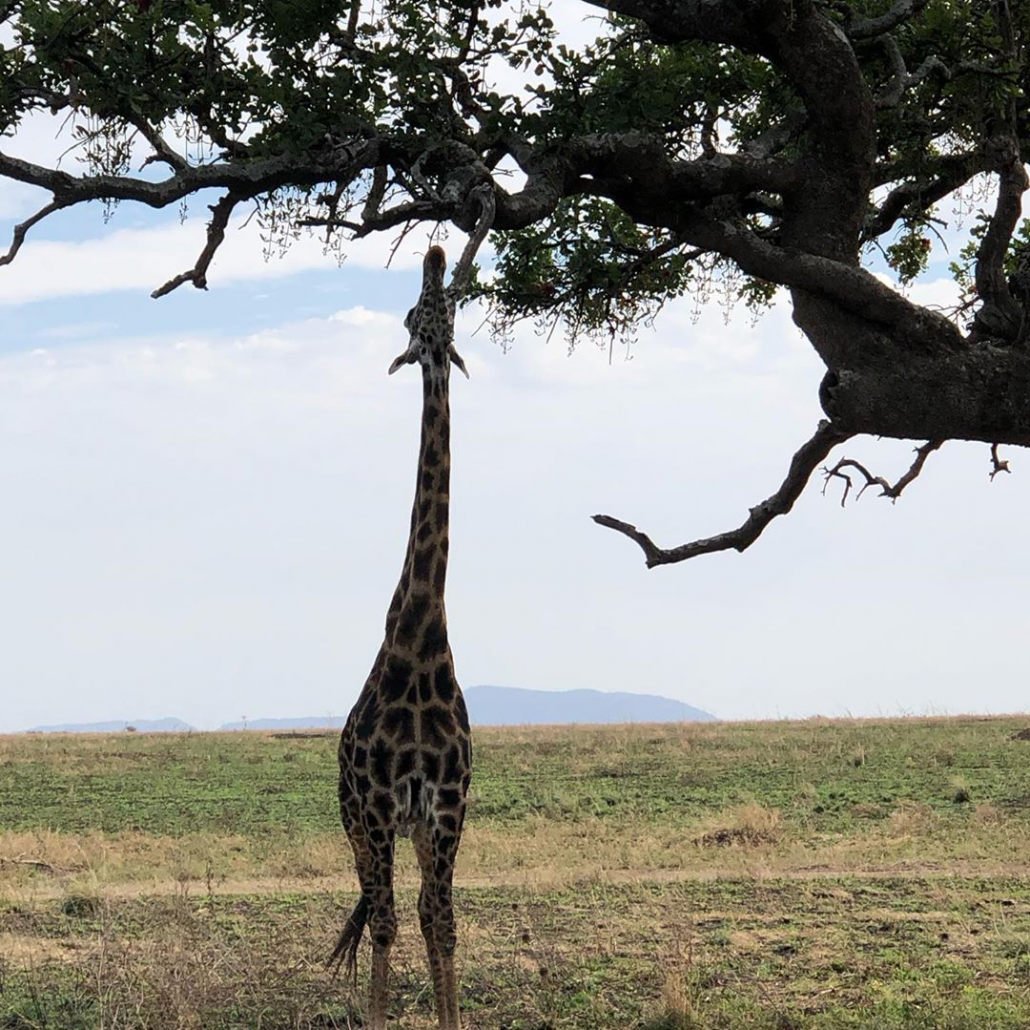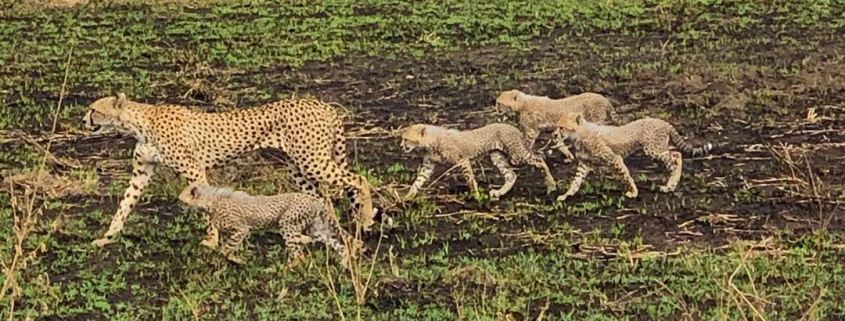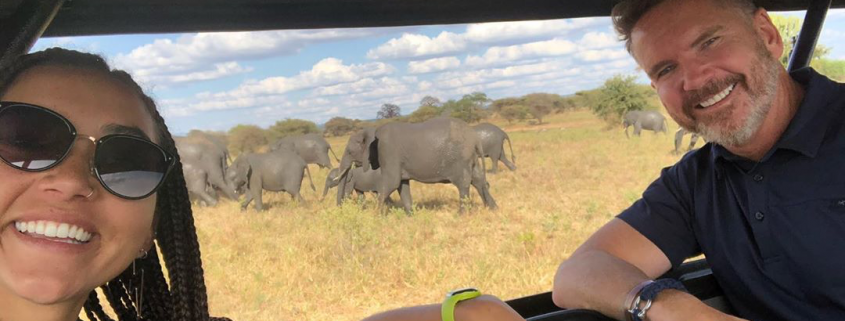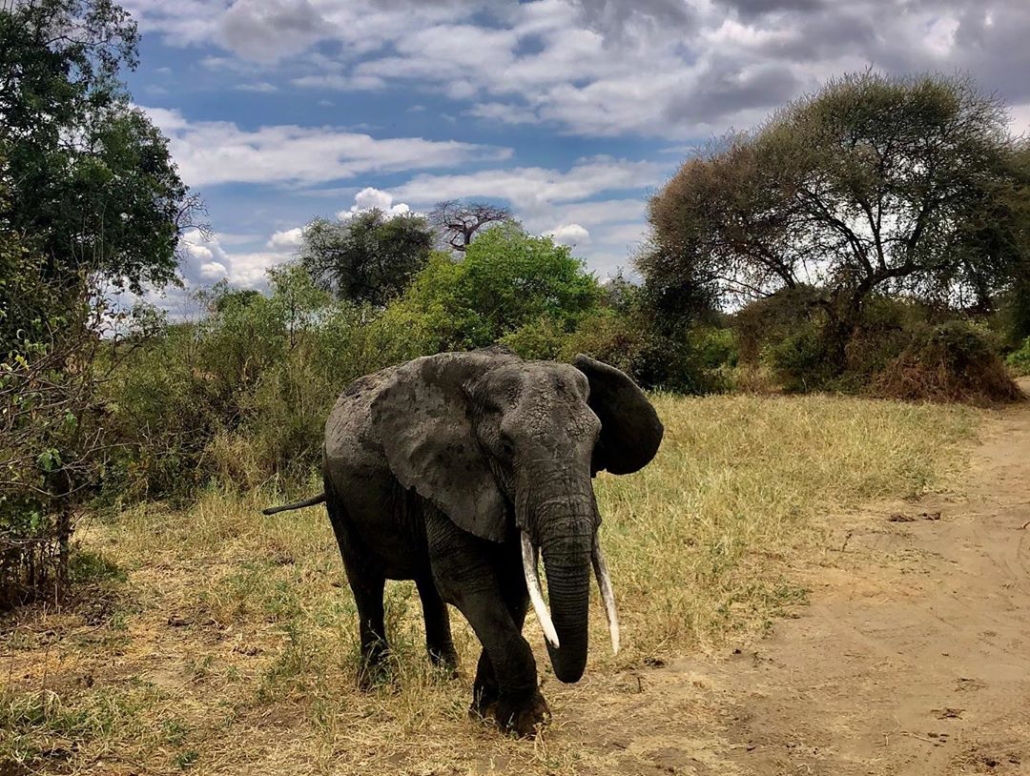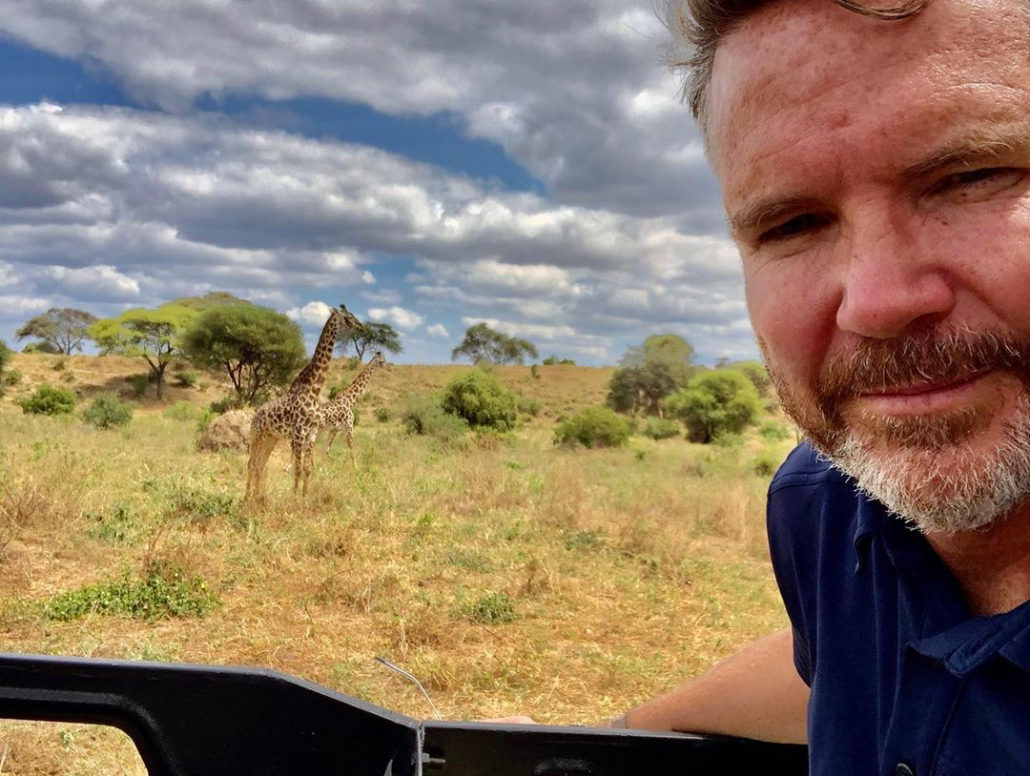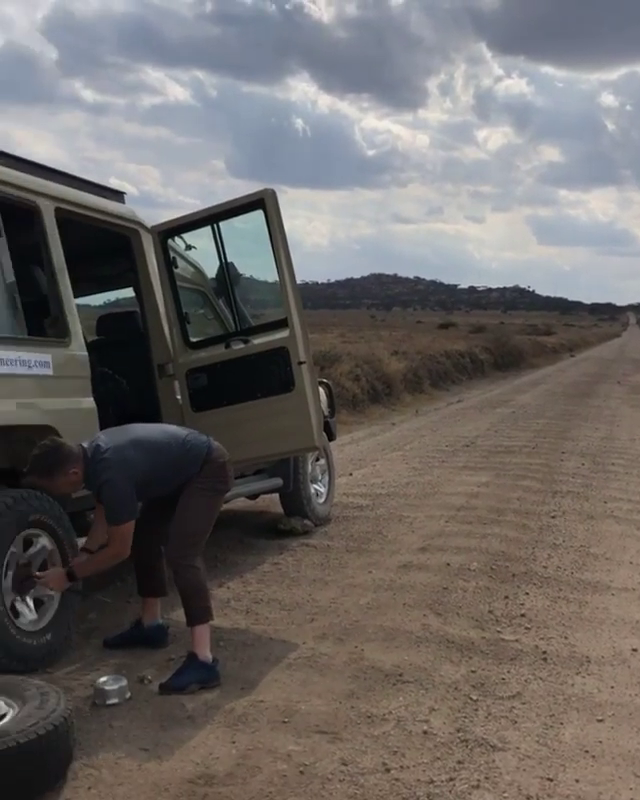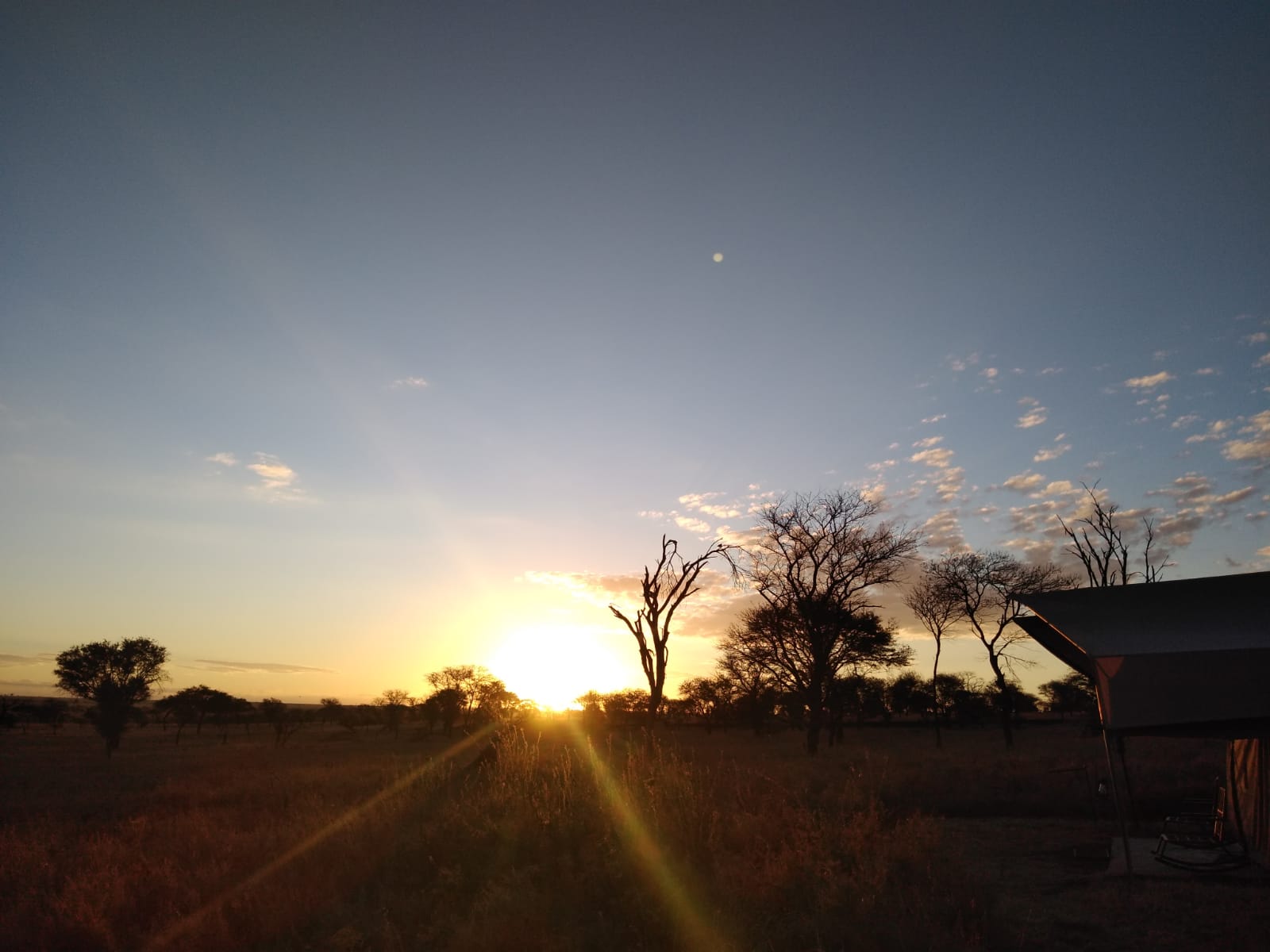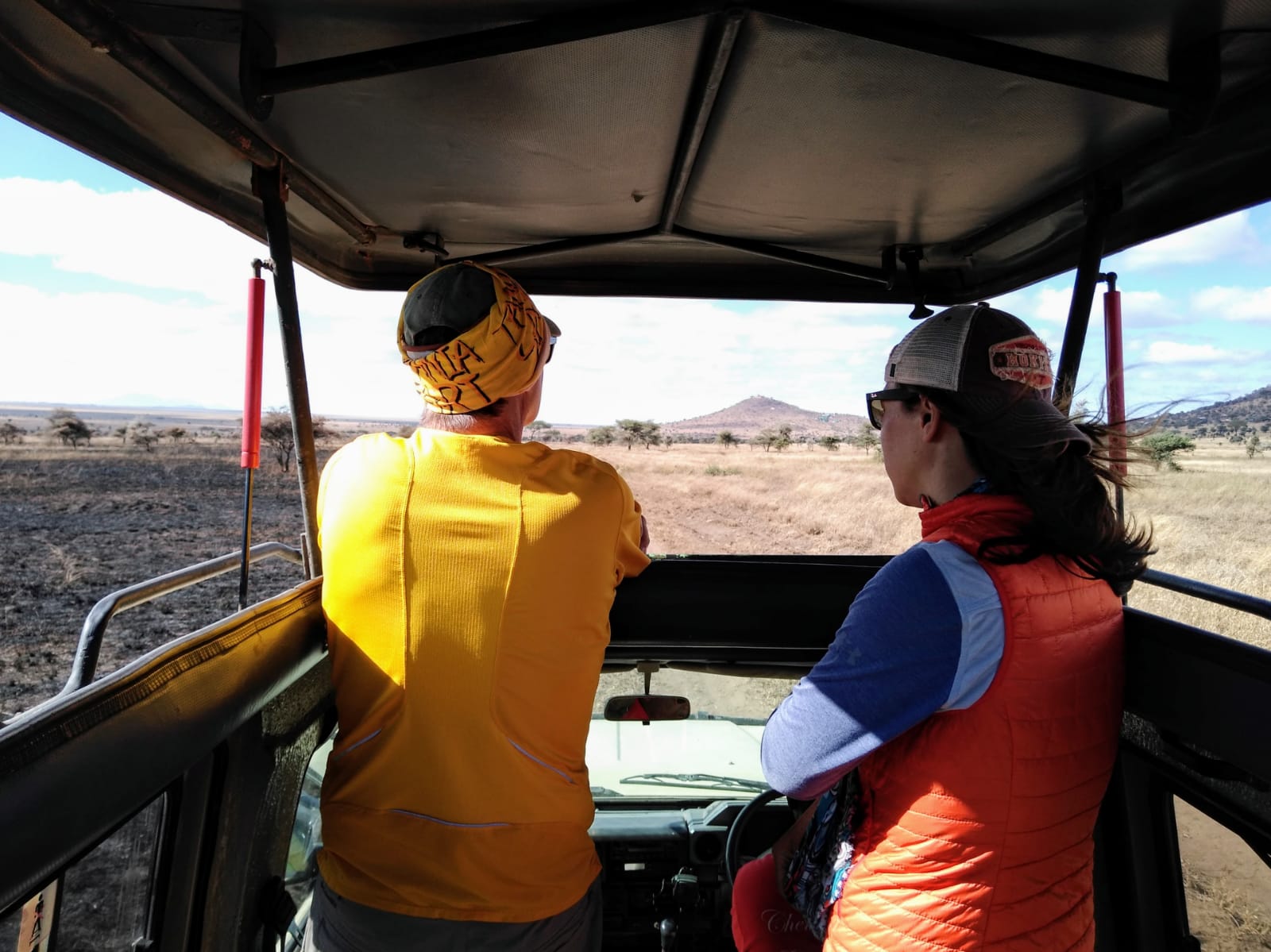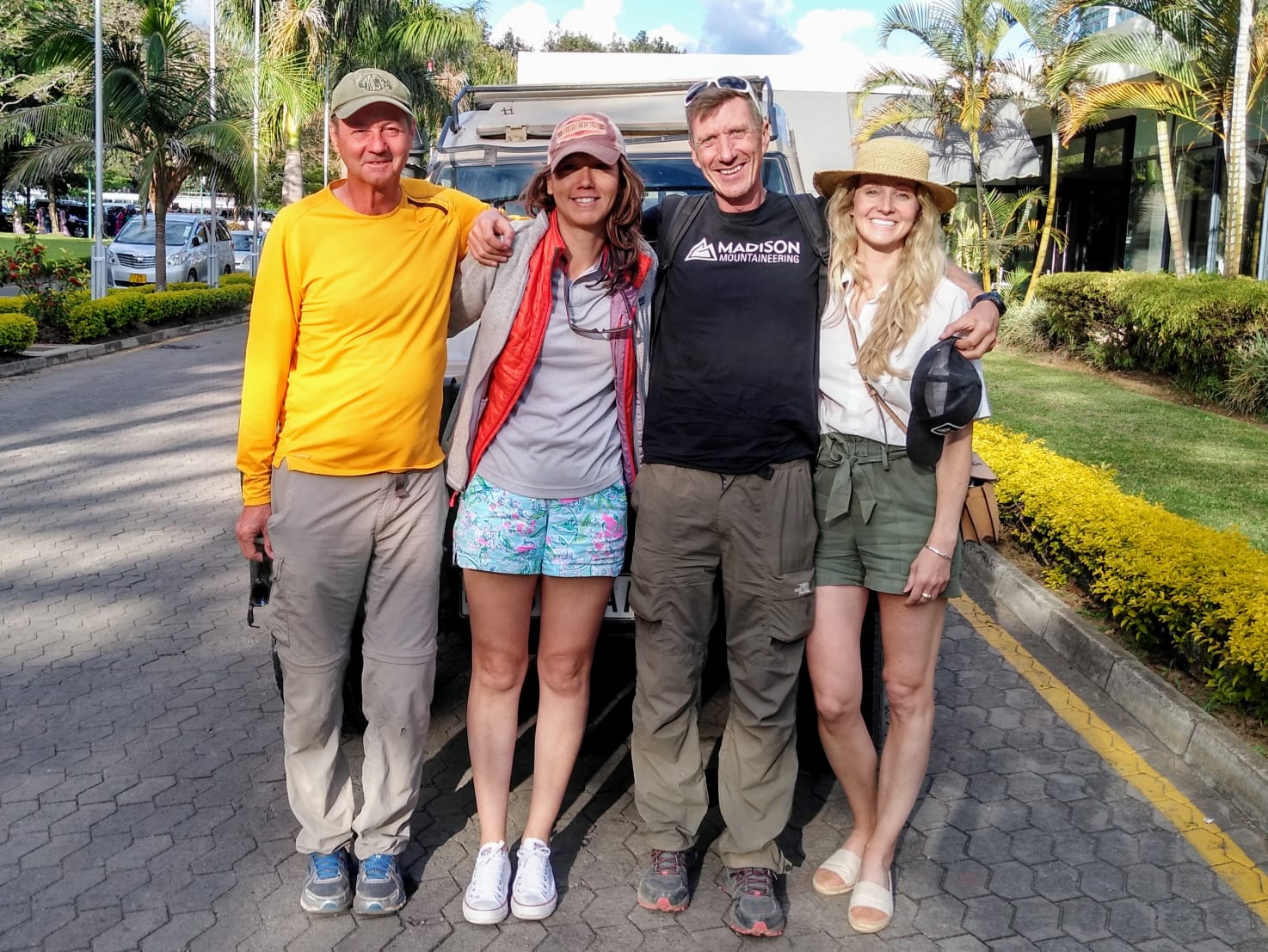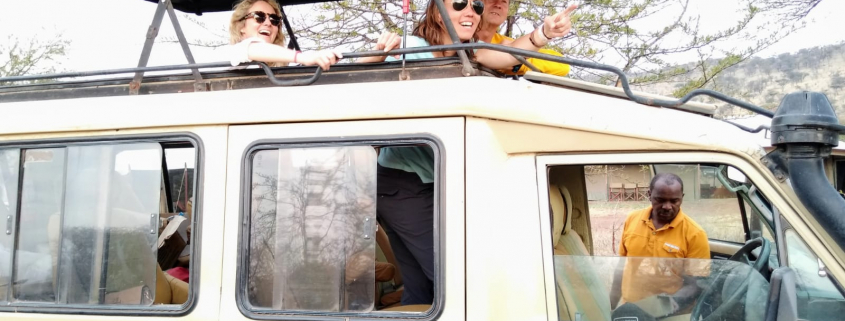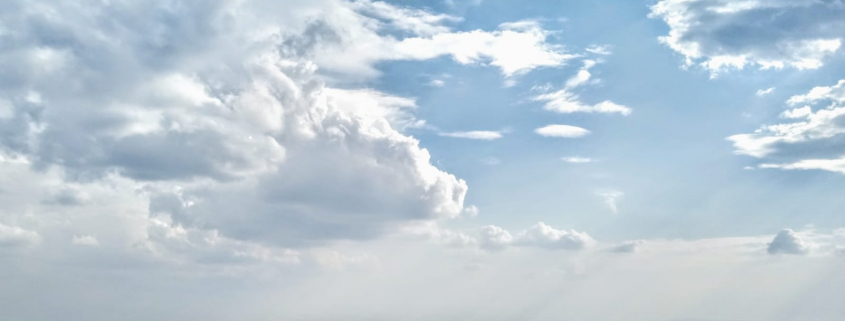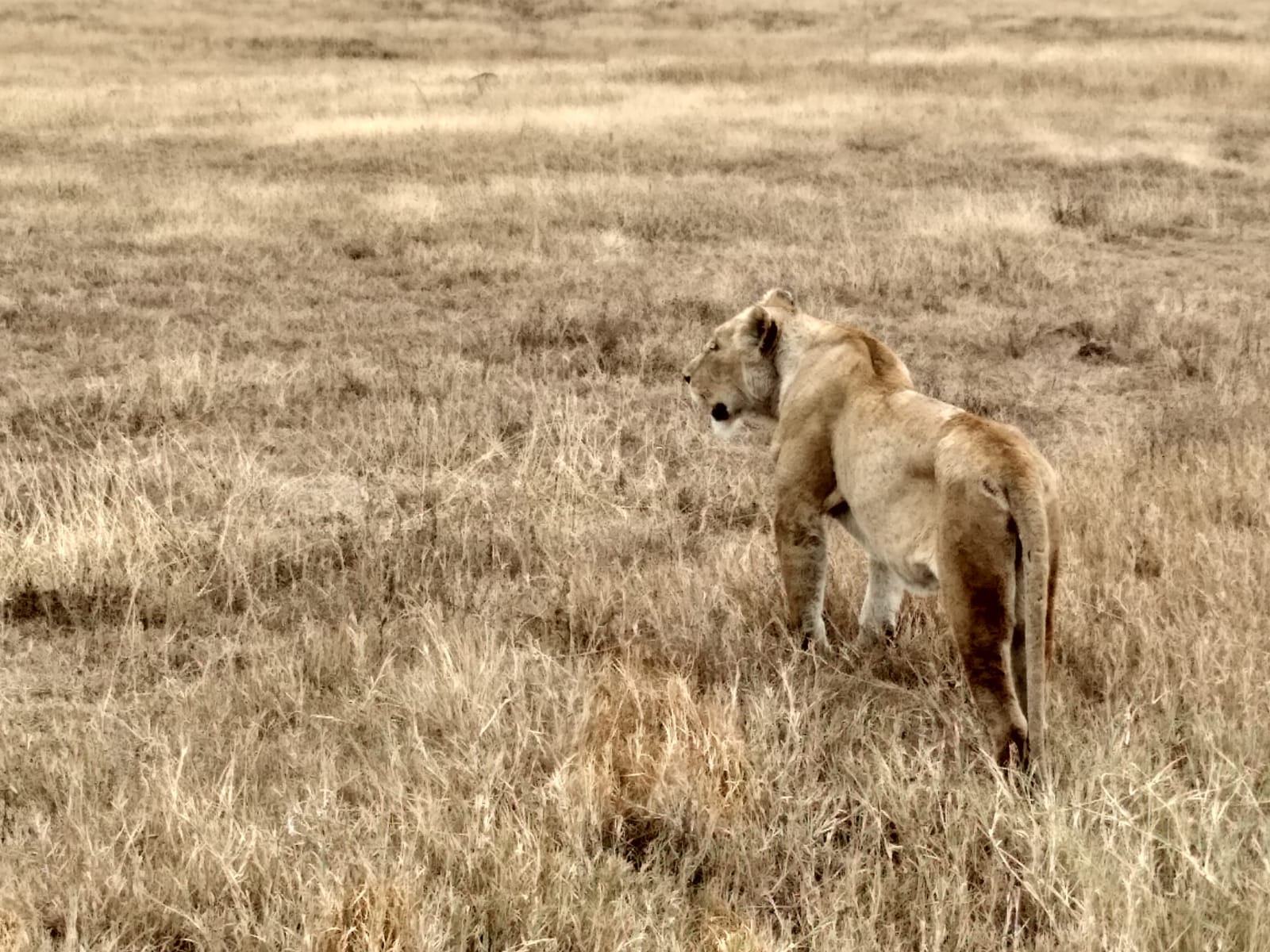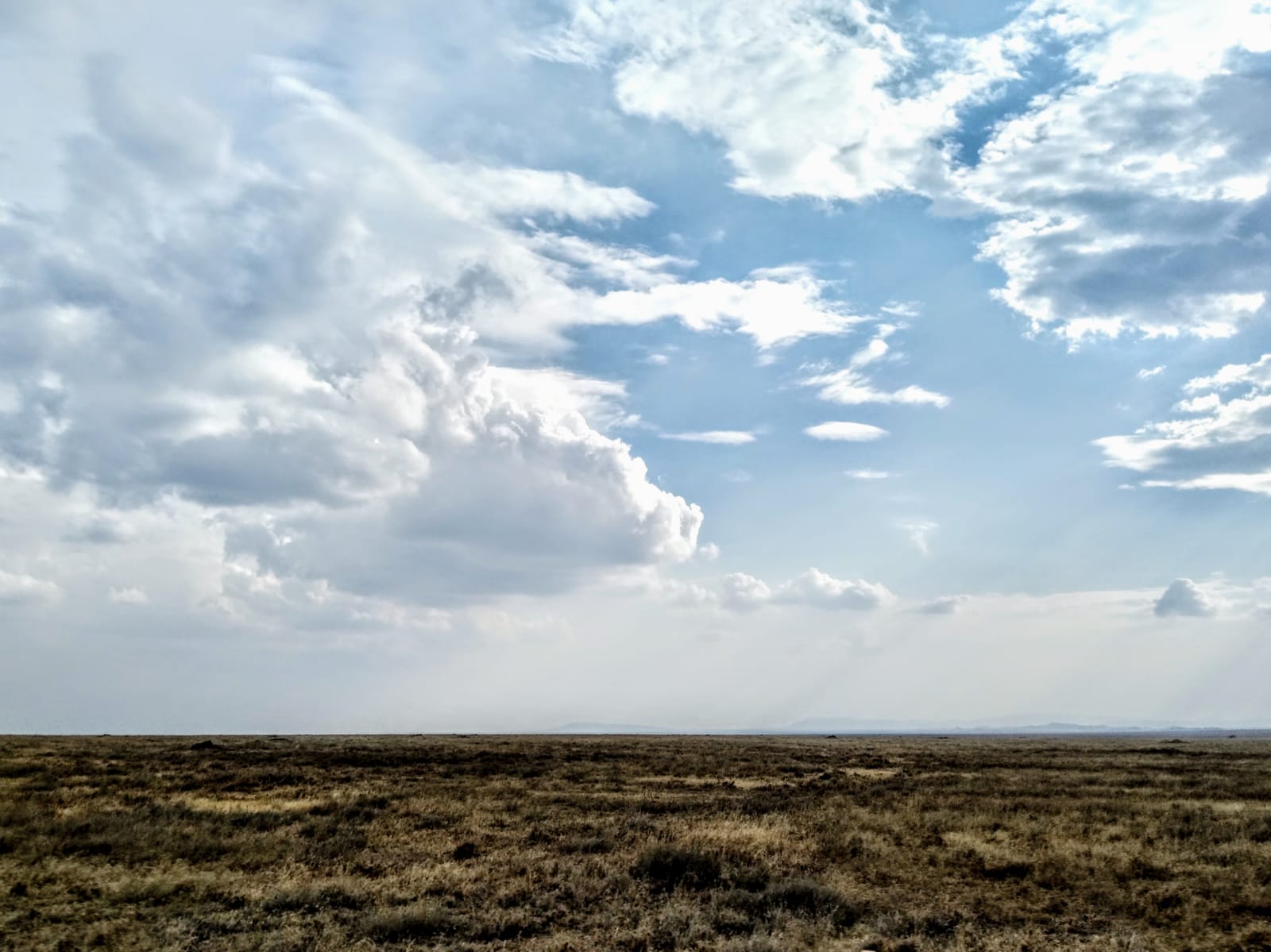Lead guide, Rob Smith, tells the story of the Kilimanjaro team’s final full day on safari in the mightly Serengeti:
Today exceeded all our expectations, as Jaclyn said on returning to camp.
Shortly after leaving this morning we saw several vehicles parked at the trailside. This usually means there is something of interest nearby. We pulled up and sure enough, a cheetah was sitting on top of a termite mound near the track. The fastest land animal in the world sat in front of us, just like that. It was sleek with beautiful markings. Black ‘teardrops’ noticeable on its alert and watchful face. The cheetah moved to a closer mound, rested and then crossed the track between the vehicles. It sat on another mound before dropping off, looking right but moving in a leftward arc. We could not see what the cheetah had seen until soon a Thomson’s gazelle bounded through the grass towards the cheetah. A pounce, a flurry of dust, a kicking of legs and it was all over. We were amazed to have witnessed the spectacle. Whatever your views on animals killing each other, this is the circle of life in the Serengeti.
We continued on to a rest stop, where maybe 50 tourists were gathered. 500′ away a tree stood with a rock by its base. The rock turned out to be the head of a male lion, its large mane bulking its head size. At one point, the lion stood up before lying down, now completely unseen. It made us wonder how many animals lay in the long grass out of sight nearby. The day continued, we saw a leopard perched on top of a Kopje, rock outcrop, much larger and muscular than the cheetah. We wondered what was coming next.
Two large lions chasing gazelles across the plain before stopping at a carcass surrounded by vultures. Hippos, crocodiles, elephants, giraffes, a jackal, hyenas, so many birds. A mother and young cheetah sitting in the shade eyeing up ostrich and warthogs in front of them. Two lionesses squabbled and the winner dragged a Thomson’s gazelle into cover and sat virtually unseen as it feasted on the catch. This is some of what we have seen today. It is no wonder it far exceeded our expectations.
We have another night in the Serengeti Osupuko Camp with the birds calling and wind rustling the tree branches. Tomorrow we leave the Serengeti to drive back to Arusha. Fortunately for us, we get to view more wildlife on the first part of the drive until we leave the National Park.
Today’s Swahili: Kiboko – Hippo; Chui – Leopard; Duma – Cheetah; Serengeti – Endless plain
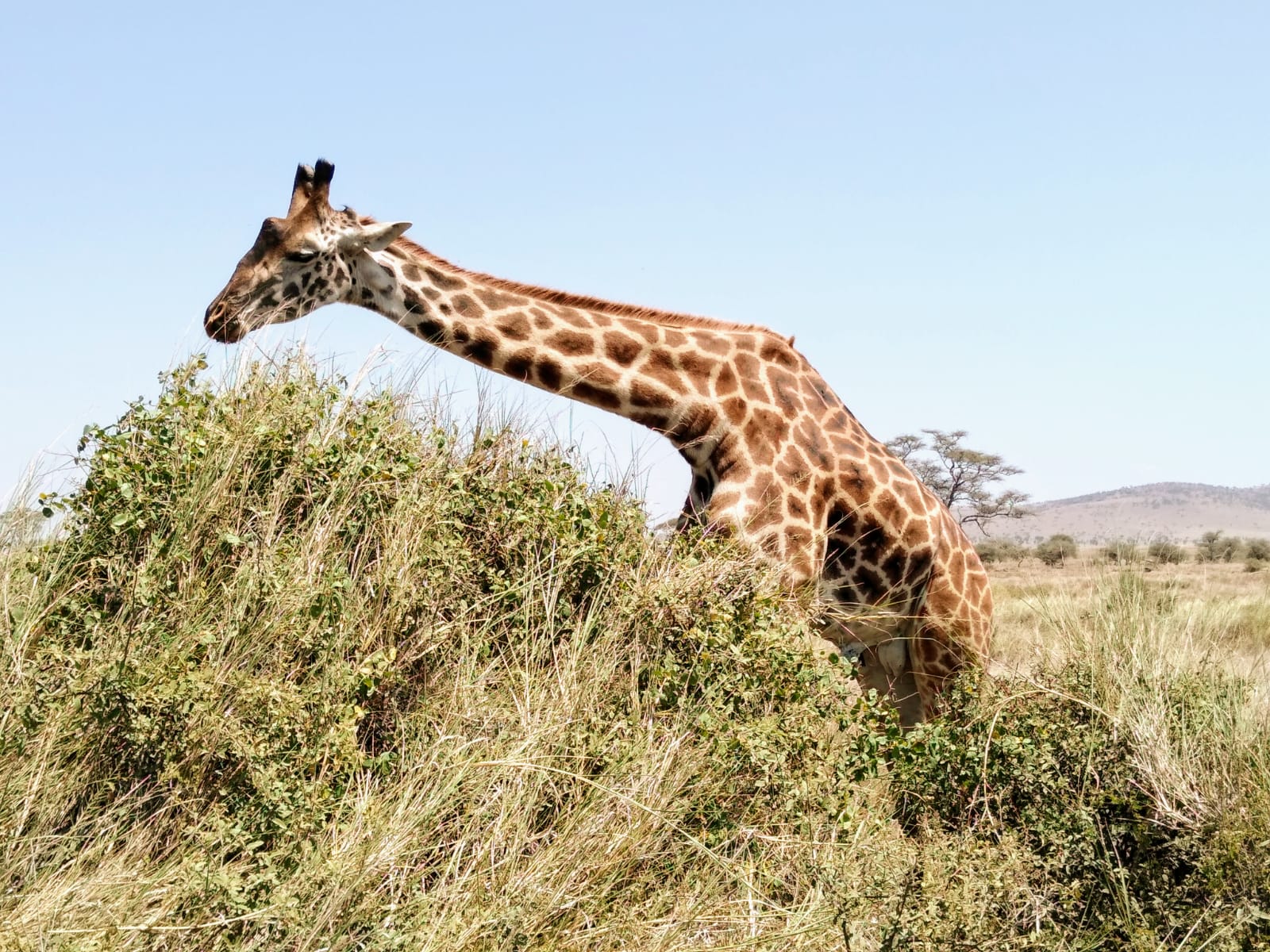
A hungry giraffe
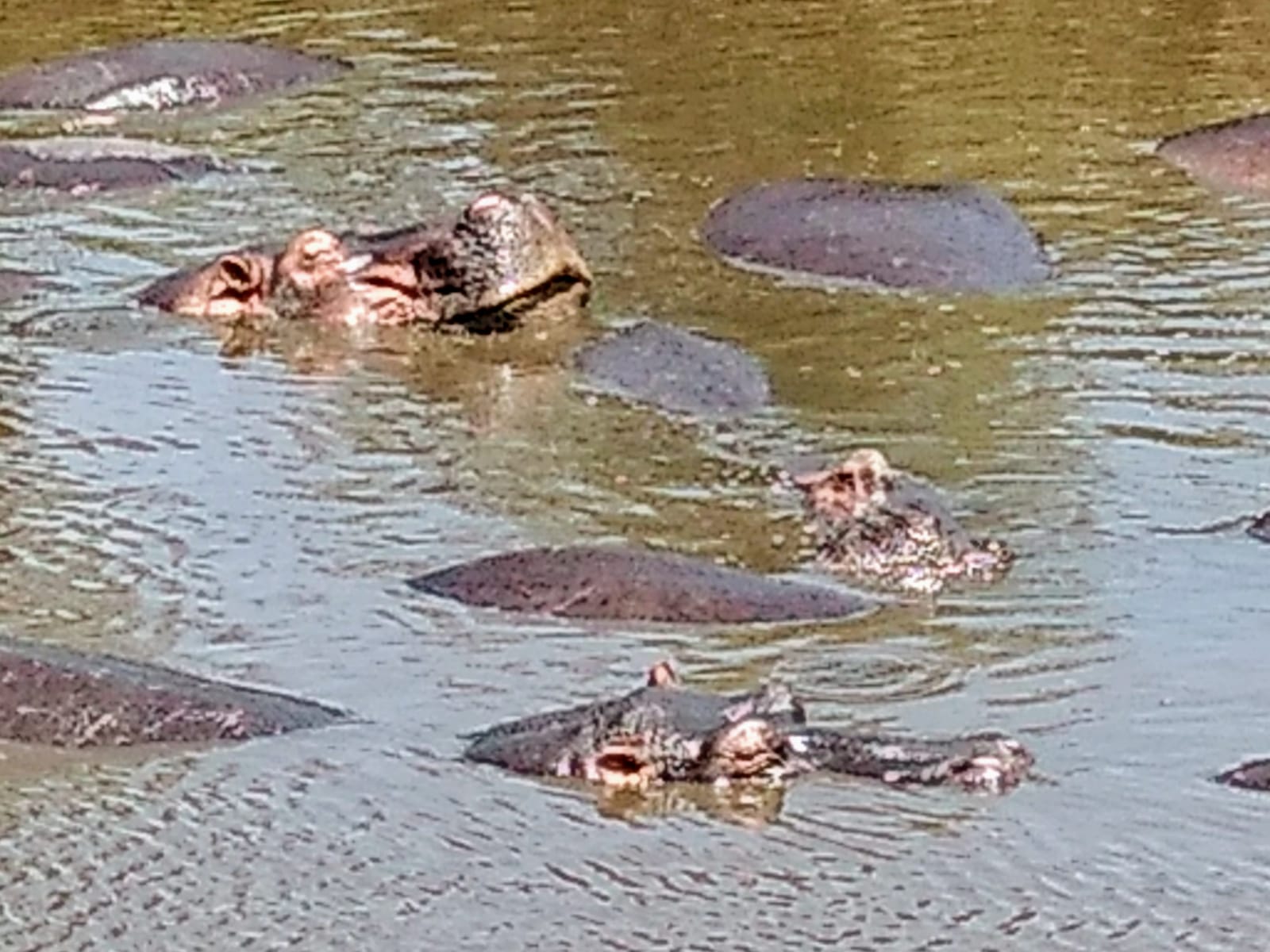
A “bloat” of hippos
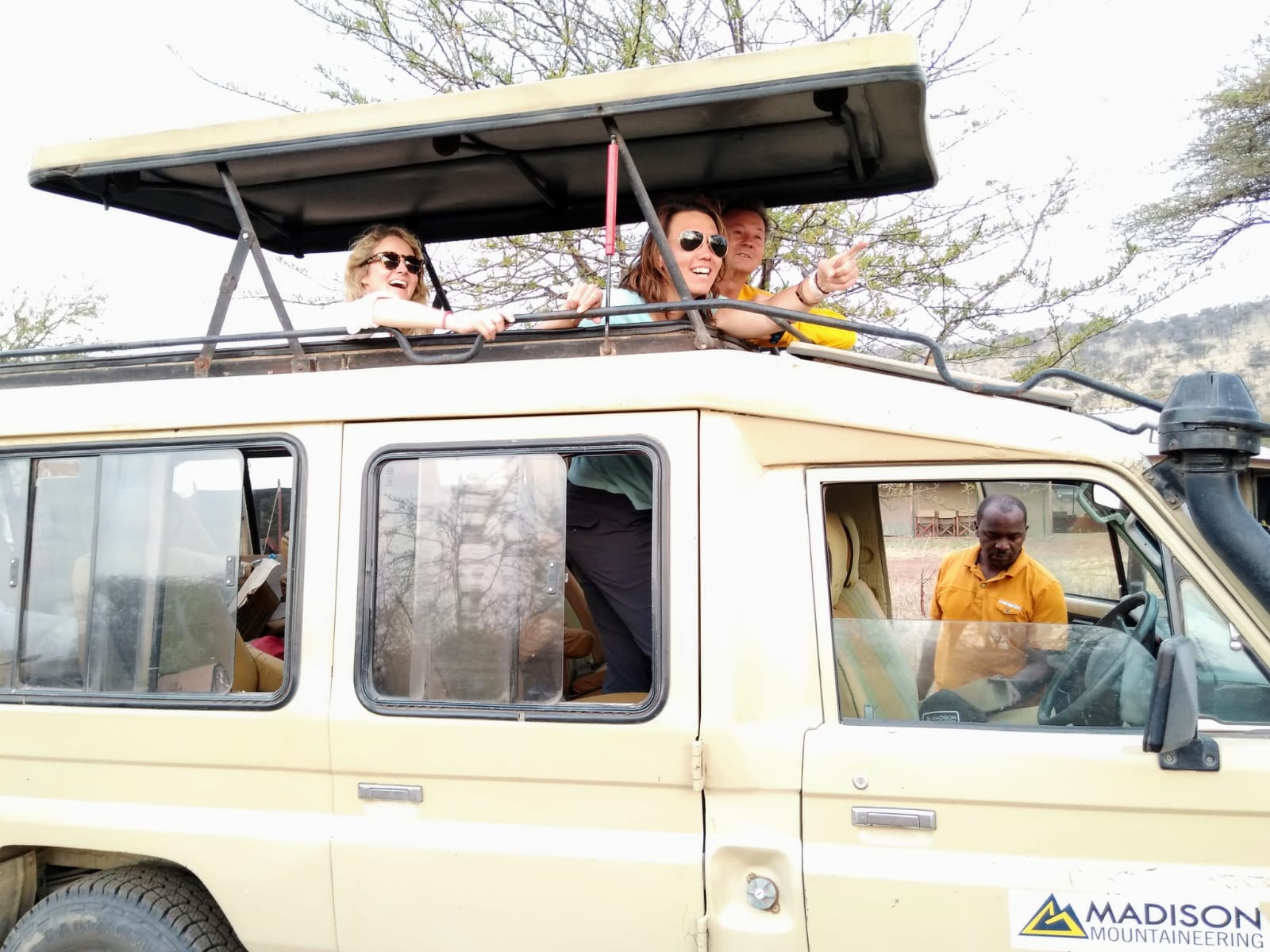
Ready for safari

